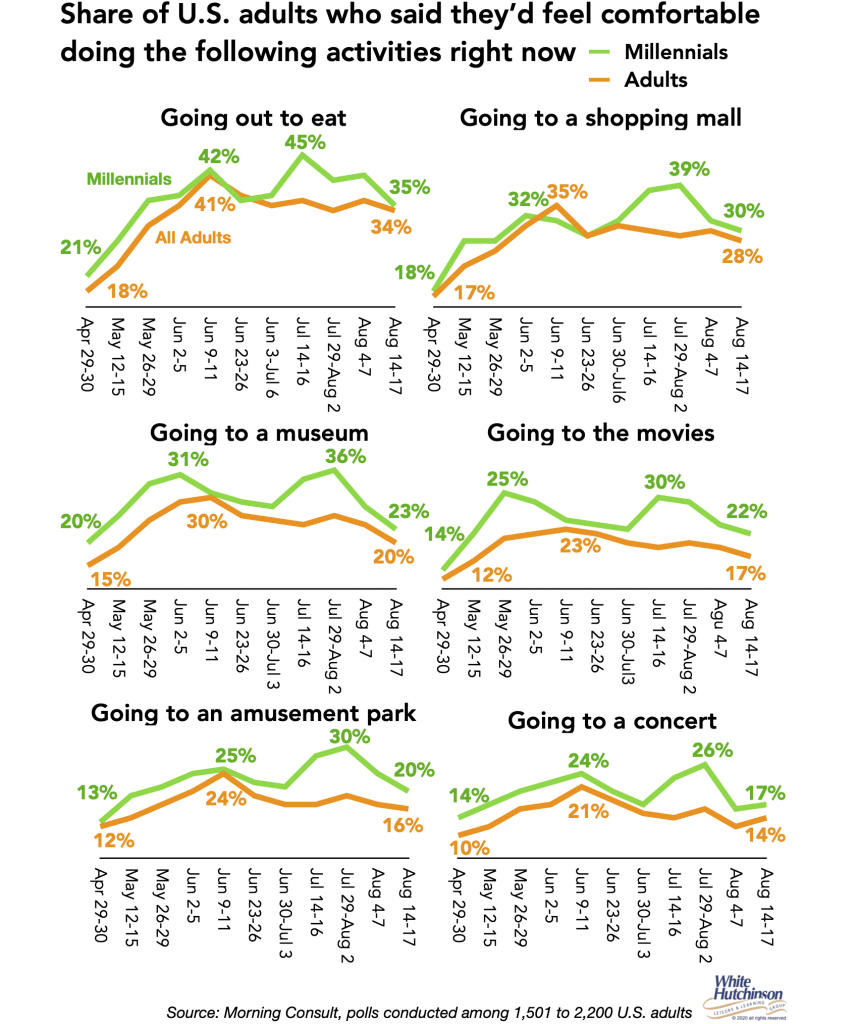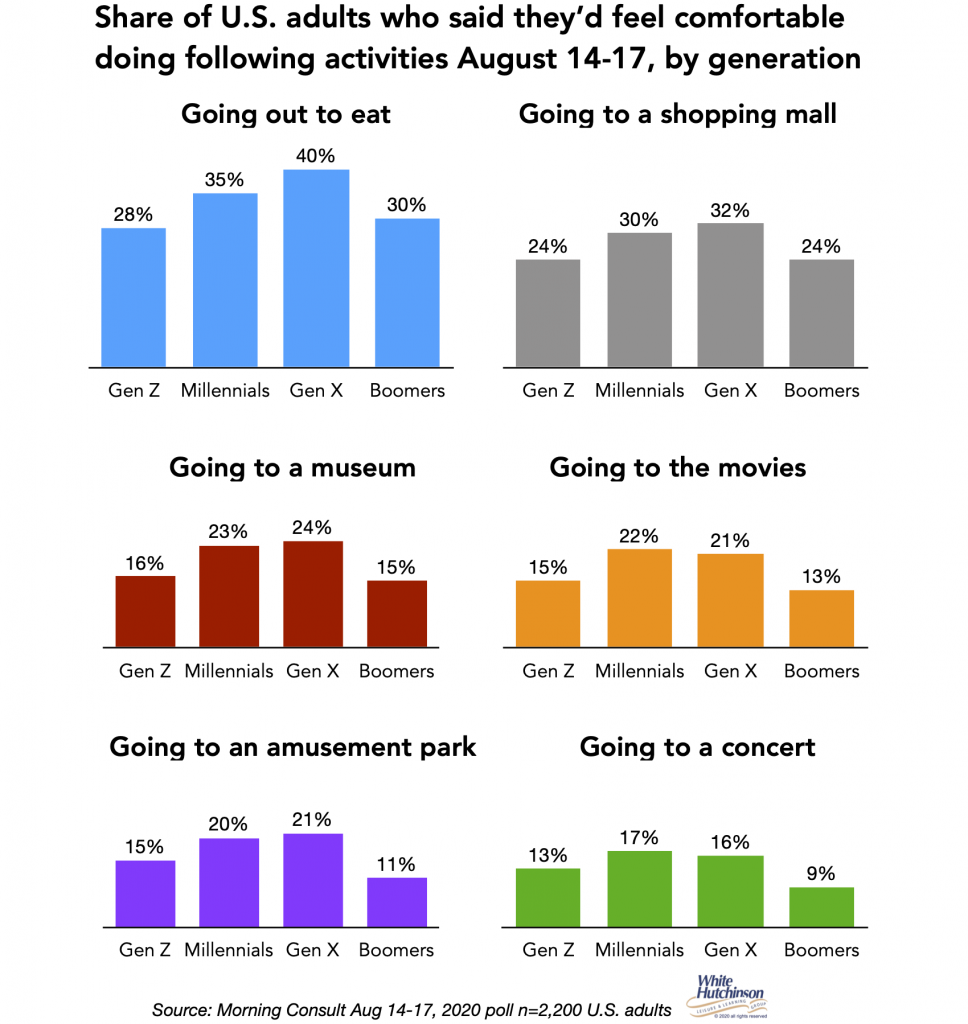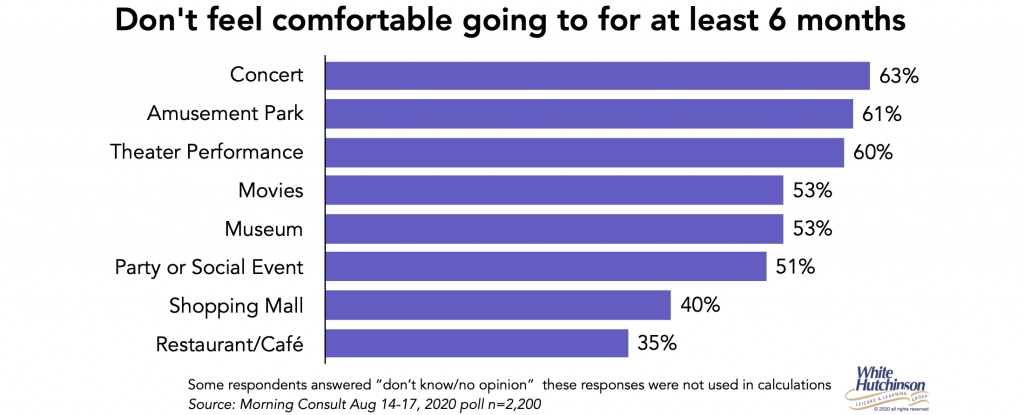Up until early June, U.S. adults were showing increasing comfort in doing various out-of-home (OOH) activities. Then, in the latter half of June as the number of confirmed coronavirus cases began to surge, the share of adults who said they felt very or somewhat comfortable started to decline. In late July, significant differences emerged for the first time with Millennials beginning to increase in comfort for nearly every OOH leisure activity while Gen X ‘s and Baby Boomers’ comfort levels were continuing to decline. I haven’t found an explanation for the differences. Then, in early August, the comfort level for Millennials took a steep decline, with their comfort levels again coming very close to that for all adults. Comfort levels for the three generational cohorts are now lower than they were in June.
Results from an August 14-17 Morning Consult poll of 2,200 adults found that one-third of adults are currently comfortable going out to eat in a restaurant or café (34%), one-fifth are comfortable going to a museum and only around one-sixth are comfortable going to OOH entertainment activities.
The six graphs below plot the comfort level for all adults and for Millennials, where the differences are easy to see.

The following graphs show the percent of each generation who felt comfortable doing the same six OOH activities. Both Millennials and Gen X (age 40-55) are the most comfortable doing all six OOH activities. OOH entertainment ranks the lowest, with less than one-quarter of Millennials and Gen X comfortable. Surprisingly, Gen Z ranks substantially less comfortable for the OOH entertainment and cultural activities. Boomers are the least comfortable for those activities

That same August 14-17 survey asked adults how soon they will be returning to different OOH activities. Here’s the percent of people saying they won’t be returning to different activities for at least 6 months in the future.

Often, peoples’ stated intentions and their actual future behaviors will be different. The rate of coronavirus infections and any medical breakthrough in preventing or treating Covid-19 could easily change actual behaviors one way or the other.
Of course, all the above data represents an average for the entire U.S. Actual comfort levels, intentions and behaviors will vary by locality. In some areas of the country, they will be better, while in others they will be worse.



